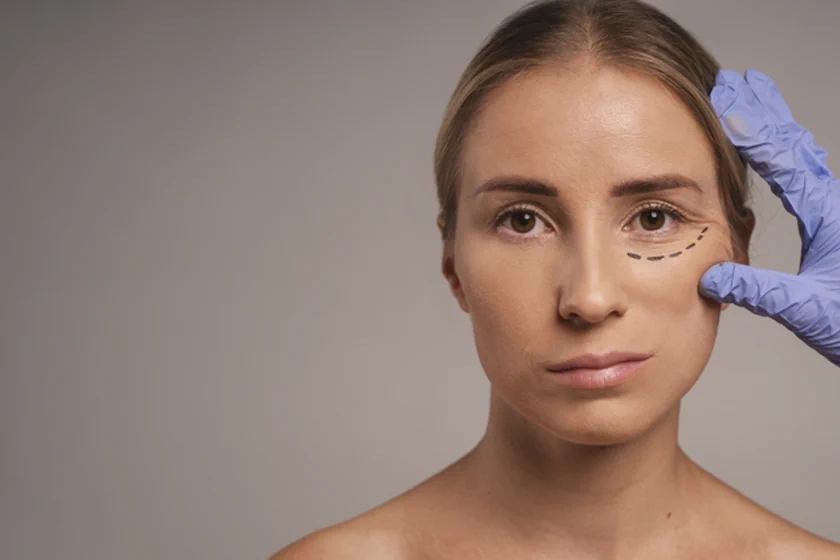|
Getting your Trinity Audio player ready...
|
Picture this: you’re driving down the road on a sunny day, enjoying the scenery, when suddenly, you notice that the vision in your right eye is hazy.
You blink, rub your eyes, but it doesn’t clear up. Concern turns into anxiety as days go by and the haze worsens. You schedule an appointment with an eye specialist and find out that you have a cataract.
This scenario is not uncommon. Eye diseases can creep up on anyone, disrupting daily life and causing significant stress.
Understanding these conditions is the first step towards maintaining good eye health. In this comprehensive guide, we explore the various types of eye diseases, their symptoms, causes, and treatment options, with insights from Dr. Surbhi Kapadia, the best eye specialist in Vadodara.
What Are Eye Diseases?
Eye diseases encompass a variety of conditions that can affect any part of the eye. These diseases can impair vision and even lead to blindness if not treated promptly.
Eye diseases can be congenital (present at birth) or acquired (developing later in life). They may affect the cornea, retina, lens, optic nerve, or other parts of the eye.
How Common Are Eye Diseases?
Eye diseases are more common than one might think. According to the World Health Organization (WHO), approximately 2.2 billion people globally have a vision impairment or blindness, of which at least 1 billion cases could have been prevented or are yet to be addressed.
Common eye conditions like cataracts, glaucoma, and diabetic retinopathy are leading causes of vision impairment. Cataracts alone are responsible for over half of the world’s preventable blindness cases. Refractive errors such as myopia and hyperopia also contribute significantly to vision problems.
Regular eye examinations and early detection are crucial in managing and preventing the progression of eye diseases. By addressing eye health proactively, we can significantly reduce the burden of vision impairment and enhance the quality of life for millions.
What Are the Most Common Eye Diseases?
Several eye diseases are prevalent worldwide, affecting millions of people. Some of the most common include:
- Cataracts: Clouding of the eye’s lens, leading to blurred vision.
- Glaucoma: A group of diseases that damage the optic nerve, often linked to high intraocular pressure.
- Age-related macular degeneration (AMD): A disease that blurs the sharp, central vision required for activities like reading and driving.
- Diabetic retinopathy: Damage to the retina’s blood vessels due to diabetes.
- Refractive errors: Myopia (nearsightedness), hyperopia (farsightedness), and astigmatism affect the eye’s ability to focus light.
What Are the Different Types of Eye Diseases?
Eye diseases can be categorized based on the part of the eye they affect:
- Corneal Diseases: Conditions like keratitis, corneal ulcers, and dystrophies.
- Retinal Disorders: Includes retinal detachment, macular degeneration, and diabetic retinopathy.
- Lens Disorders: Primarily cataracts.
- Optic Nerve Disorders: Such as glaucoma and optic neuritis.
- Eyelid Disorders: Blepharitis, ptosis, and styes.
- Conjunctival Diseases: Conjunctivitis (pink eye) and pterygium.
What Are the Symptoms of Eye Diseases?
Symptoms of eye diseases vary depending on the specific condition, but they often share common signs that can indicate a problem. Recognizing these symptoms early can lead to timely diagnosis and treatment, potentially preventing severe vision loss.
- Blurred or Double Vision: This can occur due to various conditions such as cataracts, glaucoma, or refractive errors. Blurred vision might be a gradual process, or it can appear suddenly, disrupting daily activities like reading, driving, or recognizing faces. Double vision (diplopia) can indicate issues with the eye muscles or nerves and warrants immediate medical attention.
- Persistent Eye Pain or Discomfort: Eye pain can be a sign of serious conditions like glaucoma, corneal abrasions, or infections. Persistent discomfort, especially if accompanied by redness or swelling, should never be ignored as it might indicate inflammation or an underlying disease.
- Redness or Swelling of the Eye: Red eyes can result from conditions such as conjunctivitis (pink eye), allergies, or uveitis. Swelling, often seen in eyelid disorders like blepharitis or styes, can be painful and lead to further complications if not treated promptly.
- Sensitivity to Light (Photophobia): This symptom can be associated with many eye conditions, including corneal abrasions, uveitis, or infections. Increased light sensitivity can make it difficult to be outdoors or in brightly lit environments.
- Loss of Peripheral Vision: Often a symptom of glaucoma, loss of peripheral vision (tunnel vision) can progress slowly and is usually not noticed until significant damage has occurred. Regular eye exams are crucial for early detection.
- Sudden Loss of Vision: This is a medical emergency and can be caused by retinal detachment, vascular occlusions, or acute glaucoma. Immediate medical intervention is necessary to prevent permanent vision loss.
- Seeing Floaters or Flashes of Light: Floaters are small spots or threads that float across your field of vision and are common as people age. However, a sudden increase in floaters, especially when accompanied by flashes of light, can signal retinal detachment or tears, which require urgent medical attention.
- Difficulty Seeing at Night (Nyctalopia): This can be a symptom of cataracts, retinitis pigmentosa, or vitamin A deficiency. Struggling to see in low-light conditions can significantly affect daily activities and quality of life.
What Causes Eye Diseases?
The causes of eye diseases are diverse and can include:
- Genetic factors: Conditions like glaucoma and certain retinal diseases can be hereditary.
- Age: Aging increases the risk of cataracts, AMD, and glaucoma.
- Chronic diseases: Diabetes can lead to diabetic retinopathy.
- Infections: Bacterial, viral, and fungal infections can cause eye diseases.
- Injuries: Trauma to the eye can result in conditions like retinal detachment.
- Lifestyle factors: Smoking, poor diet, and prolonged exposure to UV light can contribute to eye diseases.
How Are Eye Diseases Diagnosed?
Early diagnosis is key to preventing vision loss from eye diseases. An eye specialist uses various tools and techniques to diagnose eye conditions, including:
- Comprehensive eye exam: Evaluates vision and checks for eye diseases.
- Tonometry: Measures intraocular pressure to detect glaucoma.
- Ophthalmoscopy: Examines the back of the eye, including the retina and optic nerve.
- Slit-lamp examination: Provides a magnified view of the eye’s structures.
- Visual field test: Assesses peripheral vision.
- Optical coherence tomography (OCT): Provides detailed images of the retina.
How Are Eye Diseases Treated?
Treatment for eye diseases depends on the specific condition and its severity:
- Medications: Eye drops, oral medications, or injections can treat infections, inflammation, and other conditions.
- Surgery: Procedures like cataract surgery, LASIK, and vitrectomy can correct or manage various eye diseases.
- Laser therapy: Used for conditions like diabetic retinopathy and glaucoma.
- Lifestyle changes: Managing underlying conditions, such as diabetes and hypertension, can help prevent or control eye diseases.
About Dr. Surbhi
Dr. Surbhi Kapadia is a leading eye specialist in Vadodara, renowned for her expertise in diagnosing and treating a wide range of eye diseases.
With years of experience and a patient-centric approach, Dr. Surbhi is dedicated to providing the best possible care to her patients.
Conclusion
Eye diseases can significantly impact one’s quality of life, but early detection and treatment can prevent or mitigate vision loss. Regular eye check-ups, a healthy lifestyle, and prompt medical attention are vital for maintaining good eye health.
If you have any concerns about your vision or eye health, consult Dr. Surbhi Kapadia, the best eye specialist in Vadodara, at Adicura, the best eye hospital in Vadodara.
Your eyes are your windows to the world—take care of them!
FAQs
Can eye diseases be prevented?
Yes, many eye diseases can be prevented by maintaining a healthy lifestyle, protecting your eyes from UV light, managing chronic conditions, and having regular eye check-ups.
How often should I get my eyes checked?
Adults should have a comprehensive eye exam every 1-2 years, or more frequently if they have risk factors for eye diseases.
Are there any home remedies for eye diseases?
While home remedies can relieve minor eye discomfort, it's crucial to consult an eye specialist for persistent or severe symptoms.
Can children develop eye diseases?
Yes, children can develop eye diseases like amblyopia (lazy eye), strabismus (crossed eyes), and congenital cataracts. Early diagnosis and treatment are essential.
What should I do if I experience sudden vision loss?
Sudden vision loss is a medical emergency. Seek immediate medical attention to prevent permanent damage.
![]()







